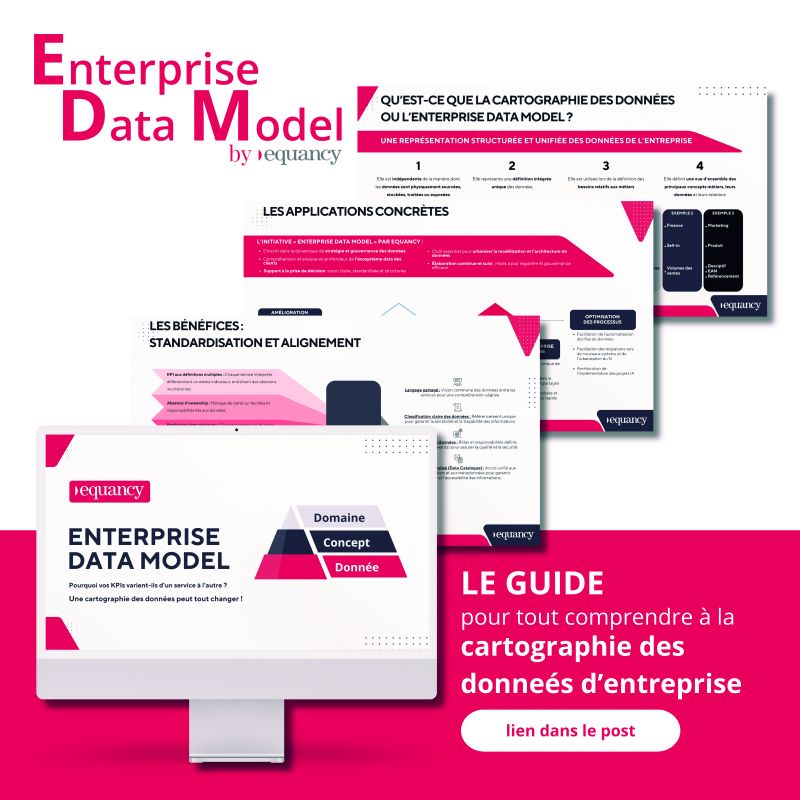How to successfully infuse a customer culture within your organization?
In this article for LSA, Justine Aguenier, Strategy Consultant at Equancy, and Jennifer Bedel, Director of Customer Strategies at Equancy, detail the levers to be mobilized to transform and develop the customer culture in companies.
Faced with ever-increasing consumer demands, brands are reviewing the importance of the customer experience. 64% of customers say that when making a purchase, the customer experience is more important than the price when choosing a brand or a company*.
It is well known that today, improving the customer experience has become a real lever for performance and differentiation, which is leading to numerous transformations within companies. More and more companies are setting up a dedicated "Customer Experience" (or CX) organization in order to accelerate and further develop the initiatives launched, while optimizing the management of the associated cross-functional issues. They are based on the development of a true "Customer Culture" within the company, i.e. attitudes and behaviors of employees that demonstrate a concern for customer satisfaction.
According to a study conducted by INIT and AMARC in 2020, 72% of respondents said that customer culture had progressed within their company and 50% said that their company had increased the financial and human resources devoted to the customer experience.
What are the levers to carry the transformation and develop this Customer Culture?
Lever n°1: Acculturation and evangelization
Communication is the first lever to activate to develop a Customer Culture. Sharing the company's strategic vision and values on the subject, the initiatives underway, but also customer expectations, and regularly learning from the best practices deployed elsewhere, helps to instill the importance of the challenges of Customer Relations and Experience.
For example, a few years ago Club Med created an "open board", in which a real customer was invited to sit on the board, in order to "validate" the customer orientation of the decisions taken, thus demonstrating the strategic importance given to customer transformation within the Group.
Many companies also organize acculturation and sharing seminars. Total Direct Energie has set up a dedicated day called "Customer Day". Employees learn about the customer challenges of the company's various businesses through workshops, discussions and sharing of customer voice elements, such as participating in customer calls. At Sarenza, induction seminars include the "customer" component as a step in the integration process for new employees, for example through double listening sessions with the customer service department. One of the most striking evangelization initiatives took place at the Paul Bocuse Institute in 2016: representatives from several companies, including Apicil, were invited to discover and learn about the service business and service excellence. They ended their training by serving customers in the restaurant for an evening.
Lever #2: Commitment
In addition to sharing with and between employees, change management involves exposing employees to the reality of the customer journey, its difficulties and its main expectations. This involves taking evangelism even further by putting employees in a situation of daily commitment.
Creating commitment means first of all mobilizing teams, particularly through challenges and the sharing of key performance figures in terms of customer satisfaction. With this in mind, at Nature et Découvertes, customer satisfaction results and customer feedback are displayed in stores and bonuses are awarded to stores with the best customer satisfaction rate. BMW also rewards the dealers who have initiated the most innovative projects in terms of customer orientation.
Engagement is also driven by sharing the voice of the customer in real time. There is nothing more concrete than receiving and analyzing customer feedback. It's a gold mine for teams who are always looking to offer the best customer experience. Air France and SNCF have understood this and collect customer feedback directly after the journey. These opinions are instantly shared with the on-board staff to enable them to act quickly and solve any irritants during the next trip.
To go even further in the commitment and empowerment of employees, as individual actors of the quality of the customer experience, the managers of Decathlon and Leroy Merlin give autonomy to employees to get out of the process when it is beneficial to the customer, by triggering, for example, compensation actions adapted to each situation.
Lever #3: Co-construction
To infuse customer orientation into the heart of the company's value proposition, it is also increasingly common to develop in-house approaches, processes and mechanisms that will put employees in the customer's shoes from the design of offers, services or customer journeys.
To do this, companies are setting up days dedicated to the construction of "customer-oriented" projects. In 2019, ING Direct organized the "CX Day" in 13 countries. During this day, the 6,000 participating employees defined prototypes to improve the customer experience. Beyond the ideation process, at Pierre & Vacances - Center Parcs, teams are encouraged to expose colleagues from other teams to new initiatives under development (e.g., new communications, customer journey bits, new services, etc.), asking them to put on their "customer" hat.
To go even further in customer-oriented construction, some even propose it on a regular or even quasi-systematic basis to their customers. Sosh has been applying this development method for several years by having the most loyal members of its community contribute to the creation of new offers. The same is true at Decathlon, where salespeople are also previewing products, and can advise customers based on their own experience. The brand also widely promotes this customer culture internally on social networks through short videos that tell how a Decathlon employee and a customer have jointly developed a product...
Lever 4: Support and training
Finally, training teams to deliver the target customer experience in a qualitative and efficient way remains essential. Companies provide employees with concrete support, such as the elements of discourse associated with the delivered experience, and train them in the "meaning of the customer".
The first thing to do is to define and communicate the target relational posture to be adopted with customers. Air France, for its part, has designed and deployed the target customer posture to all its staff. The teams thus propose a "caring relationship" to customers. They can take initiatives as long as the customer is satisfied and has a perfect experience. These values are applied by employees for customers, but are also associated with the employee journey. This is known as symmetry of attention and the close link between customer satisfaction and employee satisfaction.
Finally, the brands that know their customers best are the most likely to deliver an exceptional customer experience and build customer loyalty. The company can therefore provide tools to help employees better understand their customers and their needs. FDJ employees went to meet their customers to define typical profiles. The set of profiles they have defined allows them to understand who their customers are, their background, their uses, their needs and the difficulties they encounter... and are used by the different teams to build products and offers.
Beyond these different levers and inspiring initiatives, what are the success factors for carrying out the transformation and developing a Customer Culture?
Regardless of the lever or levers chosen, we have identified 4 key ingredients to support the development of a Customer Culture:
1. Get the initial impetus from top management. Indeed, as ROI is difficult to demonstrate in a "palpable" and measured way, the deep "conviction" of Top Management to trigger the associated investments and organizational changes is therefore essential. It is also essential to communicate the ambition to the whole organization and to the employees and to position the subject as a strategic issue for the company. However, this requires a clear definition of what the brand wishes to embody in terms of Customer Relations, in order to articulate the Customer Culture around the right messages.
2. Exposing the employees so that they know the customers and their journey perfectly, as well as their satisfaction. Experiencing the customer journey and meeting customers are "proof" approaches that help accelerate evangelization. A perfect knowledge of the customer journey allows us to better understand and respond to customer needs, to anticipate their wishes and possible innovations.
3. Communicate on customer culture in an omnichannel way. Vary the formats, the sources of information (strategic ambition, action plans, voice of the customer, key figures, best practices, etc.) shared, to better engage employees over time, and according to their job.
4. Avoid running out of steam. We must not lose sight of the fact that Customer Culture is destined to evolve in fits and starts. It must be built over time and must allow for the support of CX projects that deliver: strong meetings must be planned and supported over time through regular and renewed communication.
And you, where do you stand with your Customer Culture?




